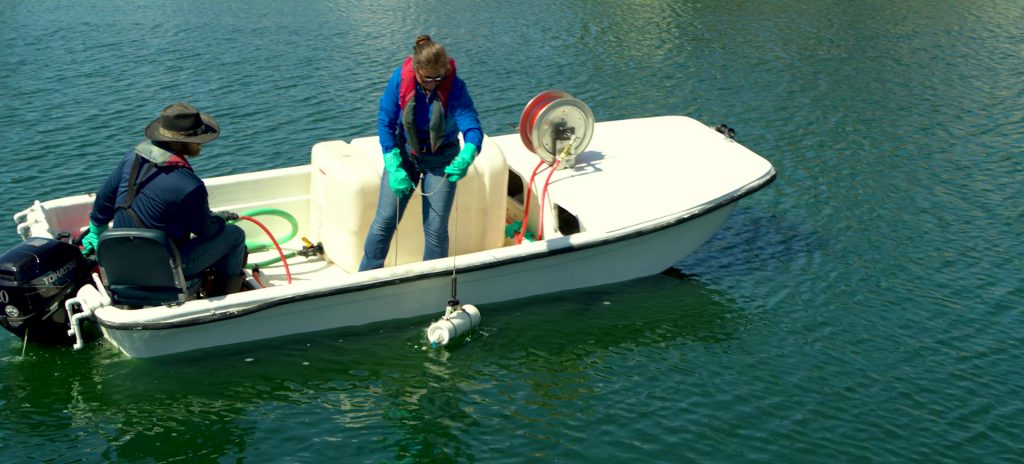
Phosphorus Locking Technologies: Phoslock and Alum
As lakes and ponds age, they become enriched with nutrients like phosphorus and nitrogen. This is a natural aging process known as eutrophication. Cultural eutrophication, considered a form of water pollution, occurs when human activity speeds up eutrophication by causing accelerated land runoff through urbanization and by allowing things like detergents, sewage, and fertilizers to enter the ecosystem. The abundance of these nutrients in your waterbody, as a result of cultural eutrophication, is not only detrimental to aquatic life but can also lead to unwanted algae blooms, poor water clarity, and foul odors.
When it comes to dealing with nutrient pollution in your aquatic system, phosphorus binding products are an excellent solution to combat cultural eutrophication and reduce the availability of excess phosphorus in your waterbody. Two such products that are recommended and often used by the professionals at SOLitude Lake Management are Phoslock and Alum (aluminum sulfate). These products are environmentally sustainable and can be easily integrated as part of a successful lake and pond management program.
Phoslock
Phoslock is derived from a naturally occurring mineral called lanthanum, which rapidly binds with and removes free reactive phosphorus (FRP) from the water column. It is also effective in locking up the phosphorus in the bottom sediments in lakes and ponds. The phosphorus bond with Phoslock is permanent and improved water clarity is often seen shortly after application. SOLitude has been using this technology in clients’ lakes and ponds since 2012, with the vast majority of applications showing extremely positive results.
Alum
Alum is extremely versatile and has been used in water purification for hundreds of years. Like Phoslock, it is also a highly effective solution for nutrient remediation in lakes and ponds. When applied to the waterbody, Alum forms a floc which binds to phosphorus and settles to the bottom. Alum is particularly effective in situations involving chronic nutrient loading or highly turbid water and is often used in big lakes that require large amounts of product for treatment.
Determining When to Implement Alum or Phoslock
Before a phosphorus mitigation strategy is implemented, water quality testing is highly recommended and SOLitude offers both field and laboratory testing services in order to provide accurate results, every time. Understanding the exact level of phosphorus flowing into your lake (external loading), as well as the already accumulated phosphorus in the lake bottom (internal loading), allows lake managers to prescribe the exact amount of product that should be applied to mitigate the current load. Each application of Phoslock or Alum is then completed by a trained SOLitude biologist or technician.
By utilizing the phosphorus locking technologies of Phoslock and Alum, your waterbody’s ecosystem will become less hospitable to abundant algae growth, and, ultimately, overall water quality will be improved. And best of all, these products are completely safe for use in any lake or pond, with no adverse effects on fish, macroinvertebrates, or other wildlife.












